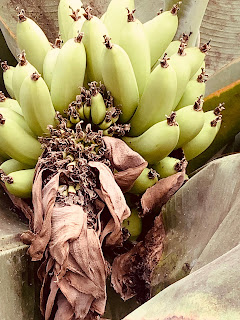So many of my students have autism or ADHD which cause stimming behavior such as juggling (tossing a little toy in a hand) or spinning an object. Rather than fight it, I thought I would use the first month of school to have my younger or lower functioning students make something they'd enjoy using. So I planned a toy making unit, starting with puppets. Week two we made pompoms from yarn, like the kind I made as a kid.

I started with "C" or "U" shaped cardboard shape to wrap the yarn around, but it got a little to complicated, so we ended up just wrapping with the right hand around the left hand. When it starts to feel thick, (I wish I had counted the number of rounds), we carefully slide it off the hand and tie a knot around the center to make a figure eight. We found the balls were fuller and stronger if we did this a couple times and tied the two figure eight together. Then it's a matter of cutting the loops to make loose ends and trimming it quite a bit to even things up and it look rounder.


Because my students are blind, we usually decided to keep a long tail or maybe even two so that they could sing them around in circles (with one hand or two). A jingle bell tied to the center made for another sensory element for these students, and it also made it easier to spot it's location when I added a little tennis lesson to the unit. We took a dry cleaner's wire hanger and bent it into a paddle, using the cardboard tube at the bottom of the hanger as the handle. I stretched some pantyhose over the hanger to make a bouncy and soft tennis raquet. Then I held the end of the string with a yarn ball at the end of it in front of the paddle and had students practice their forehand and back hand motions as they hit the "ball". It worked even better with the jingle bell announcing the moment of contact to the rest of the class. With students who had perfect vision, there wouldn't be need for the long string, and students should be able to bat the pom poms back and forth with a couple of paddles.














































